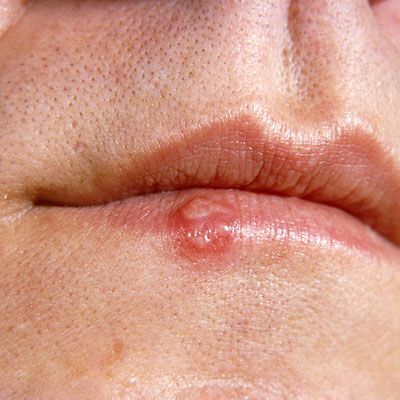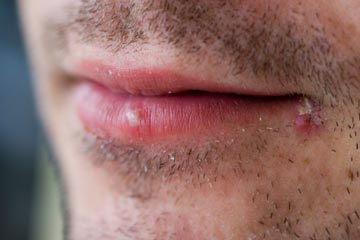Cold Sores and Fever Blisters
What are they?
Cold sores or fever blisters are skin infections caused by the herpes simplex virus 1 (HSV-1). It can be passed from individual to individual through contact through skin or saliva (kissing or sharing straws, drinking from the same glass). People are typically infected during childhood, however may not ever breakout with the signs and symptoms of the virus. Yet, for those who do, fever blisters are a painful and enduring annoyance, erupting in the same location on the site of infection usually the lips, mouth or around the nose. Once infected with the virus, it remains for life, hiding dormant or sleeping in the facial nerves near the spine.
Triggers and symptoms
 Triggers for cold sore include sun exposure, physical and emotional stress, or a compromise to the immune system such as the flu or other illness. Medical procedures such as laser hair removal around the mouth or dental procedures may also precede a flare.
Triggers for cold sore include sun exposure, physical and emotional stress, or a compromise to the immune system such as the flu or other illness. Medical procedures such as laser hair removal around the mouth or dental procedures may also precede a flare.
The breakouts typically begin with warning signs that are felt rather than seen. The person may experience a tingling or burning sensation of the lip. Flu like symptoms such as headache sore throat, fatigue may also be warning signs of an impending cold sore.
Soon after these warning signs, a blister or cluster of blisters develops typically on the border of the lip. Often described as “dew drops on a rose petal,” there is nothing pretty about these sores and the stigma around these lesions adds to the stress and disdain for the condition. These blisters eventually burst forming painful sores (“cold sores”). The sores develop into crusts, which look like scabs. The crusts are finally shed and fresh, new skin develops where the sore was. The entire process lasts approximately one to two weeks.
Diagnosis
Your dermatologists can diagnose the condition by asking about your medical history and by physical examination. Occasionally a viral culture can be obtained for a specific laboratory diagnosis. This test is not typically necessary and often misses the diagnosis because the highest yield is obtained when the blister is intact. By the time patients are able to be evaluated by the physician, the blistering phase has resolved.
Prevention and Treatment
 It is difficult to prevent the initial exposure to the HSV-1 virus. Avoid childhood direct exposure to adults who have any active or visible cold sore lesions. Despite these efforts most children will be infected by the time they reach adulthood.
It is difficult to prevent the initial exposure to the HSV-1 virus. Avoid childhood direct exposure to adults who have any active or visible cold sore lesions. Despite these efforts most children will be infected by the time they reach adulthood.
Applying sunscreen to the lips may prevent cold sores induced by sun exposure. Over the counter creams such as Abreva may shorten the duration of the symptoms associated with the virus however do not have any proven specific antiviral activity. Prescription medications such as Zovirax, Acyclovir, Famvir and Valacyclovir are the treatments of choice and can be very effective if employed at the precise moment the burning or tingling symptoms occur. They work by affecting an enzyme in the virus itself which inhibits viral replication. The medications are generally well tolerated by adults since the mechanism of action is specific against the virus. It you anticipate a known trigger for the cold sore breakouts taking the oral prescription prophylactically is advised.

